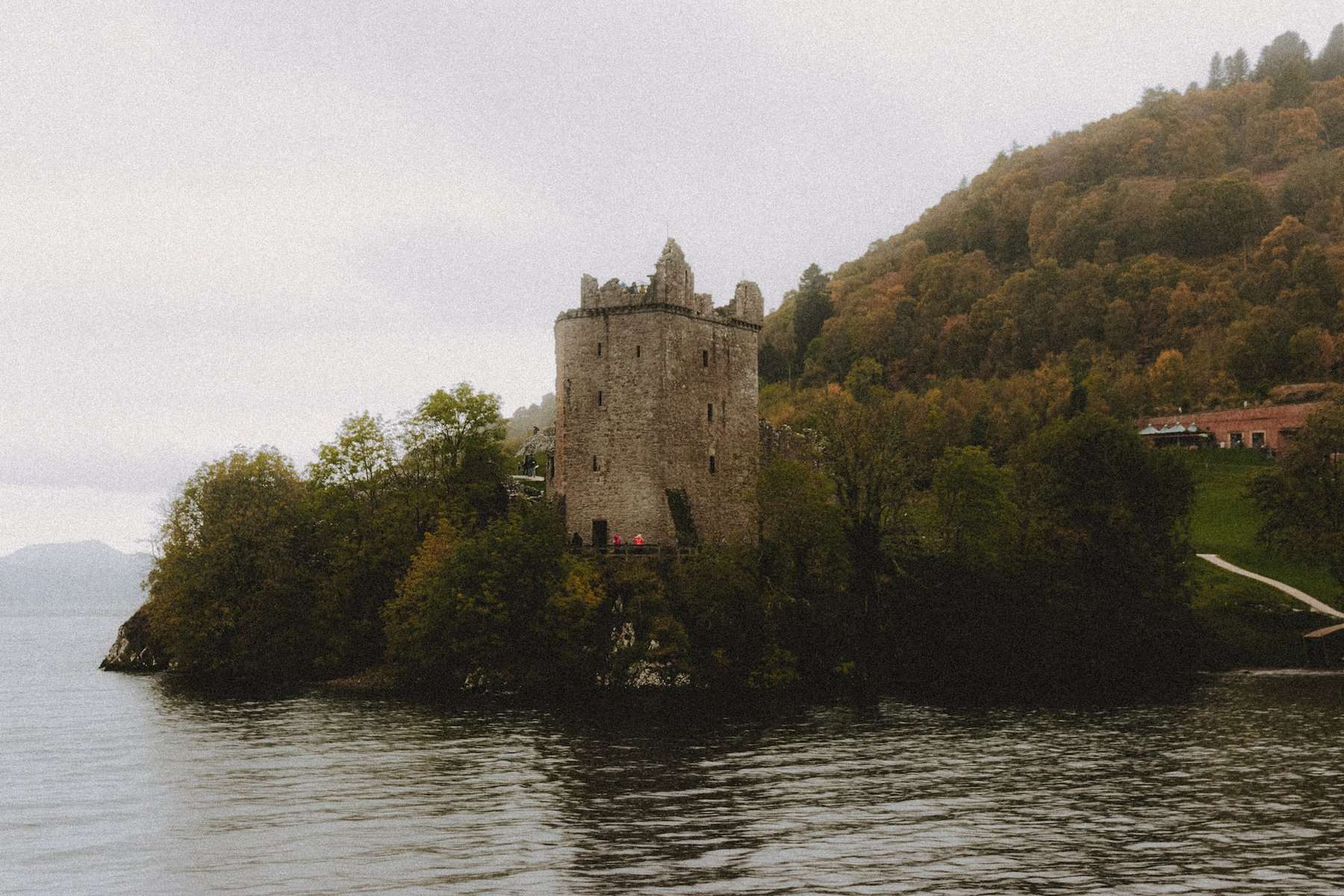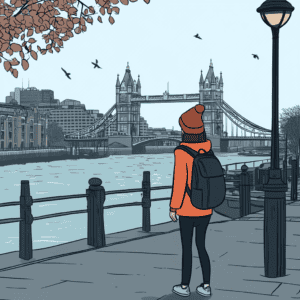Out on the Course: What is the University of the Highlands and Islands Like?

- Originally published
- Last updated on November 11th, 2023 at 06:45 pm
Table of Contents
What is it like in the Wilds of Scotland?
From seaside campuses to windswept Highland mountains, the allure of the Highlands is strong. But that doesn’t mean you can tell what it’s like to actually spend 4 years there, studying, making friends, and getting career-ready. Can you escape to the Highlands and have the college experience of your dreams? What is the University of the Highlands and Islands like for students who attend?
We wanted to know, so we asked as many students as we could find. We put together their experiences with the experiences of people living in Inverness, the basics of the programs, the international rankings…and it all comes out to a stew that is certainly as romantic and desirable as some students’ dreams.
The easy answer:
The University of the Highlands and Islands is a locally-focused university and one that serves international students mainly in adventure travel, golf, marine sciences, and Gaelic culture, history, and archaeology — all areas that rely on its craggy, quiet campuses and the absolute splendor of the Highlands.
Is that a dream for you? Maybe. Check out all the universities in Scotland (and learn how it’s different from the rest of the UK and where you can go for an absolute bargain) to get started.
Let’s dive into the specifics of life at the University of the Highlands and Islands, and hopefully, you’ll have a better sense of this unique university’s vibe before even stepping on its campuses. The best college in Scotland, after all, is the one that’s best for you.
University of the Highlands and Islands of Scotland Basics
Degrees: BA, BSc, BEng
Majors: Plenty of choices from adventure education to aircraft engineering. You’ll find multiple culture, archaeology, history, and Gaelic options, and unique golf management and professional golf degrees.
You’ll also find equine sciences and forestry. It’s hard to nail down the 12 campuses of UHI to any single strength.
However, students here find a wide array of traditional programs, especially in social science fields. Lab sciences and fields that require dedicated facilities are less popular here, since the university is a federation of institutions spread across, well, the islands and highlands of Scotland. You can’t choose a campus freely — your degree may only be offered in one location.
Location: Its administrative hub is Inverness, but students attend courses at the campus of their choice.
Cost for out-of-EU: £13,980 for professional golf and Gaelic, £15,360 for psychology, geography, and history, and £15,360 for mechanical engineering, though first year students pay just £7,980.
On-campus housing cost: Many campuses have dedicated student accommodation. In In Inverness, a studio room will run you £176 per week while a studio room costs £136. Singles are en suite bedrooms in shared “flats” with 5-7 other single rooms, all of which share a kitchen and living space. At Dornach, golf aficionados will pay £136 for a single room. Elgin and Fort William student accommodation is the same price.
FAFSA Funds: Yes
Abroad from abroad: Yes, though programs are limited. Marine Science students can choose to experience Svalbard’s Arctic Circle or coastal North Carolina, for example.
Student body: 31,000 total students, but your campus will be much smaller. Of that, just 10,800 are higher education students, not working adults getting further qualifications. A third of the student body is aged 30-49. Just 6% of students come from outside the UK.
Five adjectives: Unique, flexible, student-centered, small, environmental
Inverness? Or Maybe Perth? Skye?
The University of the Highlands and Islands has been the most difficult to review of any university we’ve ever done — ever.
The sites that comprise UHI are just so different from one another and provide such diverse experiences that the same kind of student can’t possibly thrive on the Inverness campus compared to, say, the remote Isle of Skye.
Some campuses are very small. Take Shetland, for example. In these almost long, Greenlandic-style buildings, you’ll find the cold North Sea at your fingertips (you’re not far from the Faroe Islands, and it shows).
Its waterfront location is an asset to students studying aquaculture and exploring Bronze Age settlements. Other campuses have more buildings, student support services, and broad subject offerings.
If a program you like is offered on a single campus at UHI, consider this a must-visit campus before applying. Walk the facilities. Talk to students. You’ll find a unique sort of culture of the Highlands on each campus, that will color your time at university.
Because of the remote nature of the Highlands, UHI offers ways for all its students to participate in many programs across sites, too. For instance, Archaeology is centered at Orkney College UHI, but students from the entire UHI system participate digitally, accessing lectures online from wherever they are. And excavation opportunities are scattered throughout the highlands.
So let’s talk about the campus with the largest number of programs: UHI Inverness.
Since the constituent colleges of UHI were awarded University status, Inverness has been its administrative hub. It’s also its largest campus and the urban epicenter of the highlands, including for students at nearby campuses in Dornoch and Elgin. It’s a place many UHI students will find they’re spending some time, even as they take advantage of study opportunities in learning centres that stretch beyond any single college or university.
The College Experience in Inverness
Inverness is the northernmost “city” in the UK, and with 46,000 residents, it’s the capital of the Highlands.
There’s a very respectable high street with an overflowing bookshop that’s a local institution, coffee shops, pastries galore, and pubs. To sample the city’s most indulgent study rewards, stop into Harry Gow, dubbed Scotland’s baker of the year, for a dream ring or stroll the Victorian Market and grab a chocolate chip caramel brownie.
Inverness has a small but good social scene. Most international students choose to go to the southern cities in Scotland. Inverness has everything they have, just on a smaller scale.
Getting dessert is easy. Getting around can be difficult. Uber and Lyft infiltrated in 2023, and taxi service is solid, but students may rely on trains to the airport at all hours. On the bright side, the entire town is fairly walkable. International direct flights can get you to Dublin or London Heathrow.
A bike can help you explore Inverness on weekends. Escape to Ness Islands for a walk in the redwoods (they even boast a giant sequoia). Or pedal out to see the Scottish beaches or hills. There are plenty of single-track trails through miles of unspoiled wilderness.
Outdoor types are made for the highlands. I went for the adventure management and coaching programs, which are in Fort William. It’s tiny! But it’s the jumping-off point to Ben Nevis, Scotland’s largest mountain.
Cyclists and hikers will find Inverness paradise; urban party animals, on the other hand, will not.
This gateway to the highlands is isolated and steeped in history and local culture. Residents here are more worried about summer’s inevitable deluge of “Nessie” tourists than about international students, as they see fewer long-term outsiders than other student cities of Scotland.
That can make Inverness a cozy option for newcomers who are embraced by locals and less likely to get lost in the crowd than new students in Scotland’s more expensive Central Belt (Glasgow and Edinburgh).
The student population in Inverness is small. It’s not just that the city is small; the city is also made for locals and it doesn’t cater to students the same way that a similarly sized city like Stirling does, as it has a larger student culture.
Student Safety in Inverness
Inverness’ small size can be a relief for students looking for the safest place to be a student in Scotland. Residents here are half as likely as those in Glasgow to find themselves the victim of a crime. Its 2023 crime map shows one criminal arson and a bike theft, with no violent assaults anywhere.
Its crime index of roughly 37 crimes per 1,000 people doesn’t tell the full story: American cities typically assess crime rates in terms of violent crime, not overall crime.
Here is the best comparison: in the US, the national average is 22 violent crimes per 1,000 people.
Given Inverness’ high rate of reported non-violent crimes compared to other types of crime, it’s a fair assessment that violent crime comprises a tiny sliver of Inverness’ overall crime profile. For instance, 12 of the 1,000 crimes reported in 2022 against Highlanders and Islanders were vandalism. Rape, sexual assault, and serious assault make up 3.6 of every 1,000 crimes. Since robbery, attempted rape, and homicide barely register, violent crime is likely under 4 per 1,000 residents, far below the average American city.
I am a single woman living in a dodgy area and I feel safe walking anywhere in the city center day or night. There are loud, drunk people, and there are sometimes people with drug problems, like anywhere, but they have never made me feel unsafe.
Student Diversity in Inverness
Inverness’ small-town credentials make it an ideal place for students not looking for big-city diversity, excitement, or distraction. Students call it safe and welcoming, though students yearning for a vibrant gay, Muslim, or community of color might not fare as well. According to students, tolerance is high in this corner of the Highlands, though opportunities to socialize are not.
Everyone is welcomed at UHI with open arms. It just feels like a place where anyone can be themselves and be embraced by the community. There’s a thriving queer community and as far as racial diversity, the Scottish Highlands have been exploding in leaps and bounds over the past decade. Inverness is not London. It’s not even Edinburgh. But it is very friendly.
What’s it Like to Study on Campus?
On the far northeast side of Inverness, you’ll find campus. It’s an American-style block of buildings with ample parking space, but it’s not exactly friendly to international students without cars. Dotted with parking lots, it most resembles a suburban American campus. And it’s a 45-minute walk to central Inverness (some direct busses take about 20 minutes).
The campus itself is lovely. Low, stacked stone walls wrap around new timber buildings with airy glass walls — a mix of textures that feel at home in the rocky and woodsy highlands. Stand on one of the pond’s overlooks and contemplate the distant hills or your long trek to a building on the other side of a distant green field.
The campus facilities are all brand new, so that’s nice. The library is huge and where most students hang out and study after class, though it can get loud. I love the Honesty Library, where you can take and donate books.
The spacious, suburban campus is new and welcoming. That’s par for the course at all the UHI campuses, where new buildings and a unified look have helped bring cohesion to this smattering of small, local higher education institutions.
The unifying look hasn’t surmounted the lackluster reputation of UHI, however.
Largely a local school, the university picks up its international students almost wholly in unique programs that students from abroad can’t get anywhere else. You’ll find on-campus students in each university’s main student hub building, where you’ll likely find the library, cafés, and student societies.
From gaming to choir, basketball to powerlifting, there are a smattering of societies and sports, but pickings are slim compared to other Scottish Universities. At Inverness, the atrium is the heart of campus, with a restaurant run by students as well as a café. It’s got classrooms and the library, airy gathering spaces, and lecture halls.
With resources spread throughout the Highlands, UHI does its best work in including Highlanders in college life but does a poor job of consolidating students from diverse backgrounds with multiple interests in a single place.
Across the university, students have access to all sorts of student societies, but in any one place, just a few dominate.
For those from afield, there is student housing where you can meet other campus dwellers. Like the rest of campus, the Inverness dorms are new and clean. They get negative reviews from students who say noise is a problem. If you’re into laminate flooring and the hustle and bustle of all-hours student life, you’ll appreciate the en suite bathrooms and 3/4 size beds, which are roomy and adult-sized.
Student Experience in Academics
There’s a cultural chip on the shoulders of many Brits about new universities.
Perhaps the allure of Oxford has seeped into the general cultural imagination that centuries of tradition, or at least of tweaking the system, make for a better education.
However, UHI, which emerged in the 1990s, can offer some educational experiences that you won’t get anywhere else. For students across all of UHI’s locations, the Gaelic culture of the Highlands and deep roots in the local community speak to the true value of academics at any of these colleges.
Here are some examples: Archaeology at Orkney hosts Nordic studies digs. Geography field trips to the Cairngorms give students hands-on experience in a landscape that’s unparalleled. Forestry students find themselves smack in the middle of a highlands conservation zone. Marine science students can access Scotland’s top program (according to the Guardian, 2022 and 2023).
On the coast of Oban, they’ll get access to field courses and work on research vessels that you can’t replicate elsewhere. Work on Polar Seas (especially in conjunction with the Svalbard study-abroad program) is truly unique.
Spend 6 months or a year in the high Arctic in your third year, and you’ll be able to do your 4th-year dissertation on an Arctic topic. With North Carolina and Netherlands partners, students can go in the opposite direction and focus on the warm Caribbean.
With 100% student satisfaction, Marine Sciences aims to personalize the education of all its undergraduates and give them access to professional researchers from day one.
We have so many opportunities for research with world-class researchers just next door. When you’re taught by people who spend the rest of their day researching on the cutting edge of science, you are inspired to see yourself in that position someday. You’re always thinking about how you’re going to contribute to this body of knowledge.
The academics that stand out at UHI are those inextricably tied not to tradition but to the landscape, ecology, and history of Northern Scotland. They’ll find themselves involved in research projects that are undeniably tied to the region, history, and geography.
The northernmost campus on Shetland Island, for example, hosts the Culture and Heritage with Gaelic Studies program. Newbies get Gaelic instruction from native speakers, and third and fourth-year students can write their final projects in the language. They can advance to master’s degrees in Viking Studies, Scottish Heritage, or Island Studies.
I came to UHI because it was very small. I was an integral part of my program. I had access to all the aspects of research that other undergraduate programs did not include. I had much smaller classes and much more senior lecture staff.
Remote Teaching and Learning
Many UHI programs have been masters of remote learning since way before COVID, so students join programs using online discussion boards, video conferencing chats, and groups where module-mates can chat and collaborate. However, the allure of UHI is the setting, and while remote learners say they have a good experience, most students appreciate that there is a lot of hands-on learning in the courses that rely on their highland and island heritage to serve students with local flair.
Similarly, diverse programs come with diverse academic assessments: students here appreciate that there are essays, presentations, exams, and field projects throughout their courses, so if exams aren’t their forte, they won’t find their grades reliant on a single, high-pressure assessment. That’s not to say most programs don’t base a good chunk of students’ scores on final exams. However, the mix of assessments is a good compromise for students who are hesitant about Europe’s exam-heavy tradition.
Apply as an American
Students from the US can apply with a GPA of 2.7 plus either an ACT of 20, 2 AP exams scoring 3 or higher, an SAT of 1000 (50 in each component), or 2 SAT subject tests with a minimum score of 500.
Use UCAS’s application portal to apply by January 31 and you’ll hear from UHI by May 16.
Highlands Not Right for You?
Unless your program demands it, it can be tough to attend a university based in the Highlands. And that’s ok. There are lots of colleges and research institutions scattered across Scotland that can give you some of the same cultural experiences. After all, what makes a great university is the unique place and deep roots it has to its land and to the students at the heart of the program. Look at other Scottish sentinels like St. Andrews (Ranking / Guide) or Aberdeen (Ranking / Guide). Both ancients offer small-town Scottish life for students more interested in history than nearby clubs.
And if you want to give the big city a try, try the University of Edinburgh (Guide), which also sports high student satisfaction rates and a historical city bursting with charm.
Related Posts

Jessica Share
Jessica is the writer, Ph.D., and mom-of-an-abroad-student-in-the-UK at the helm of College Abroad Guides. When she's not asking college students where the coolest place to hang out in their city is, she's figuring out how she can make $60 imported Greek oregano potato chips and £50 British bacon potato chips appear on her doorstep for the cost of a local bag of Lay's.





